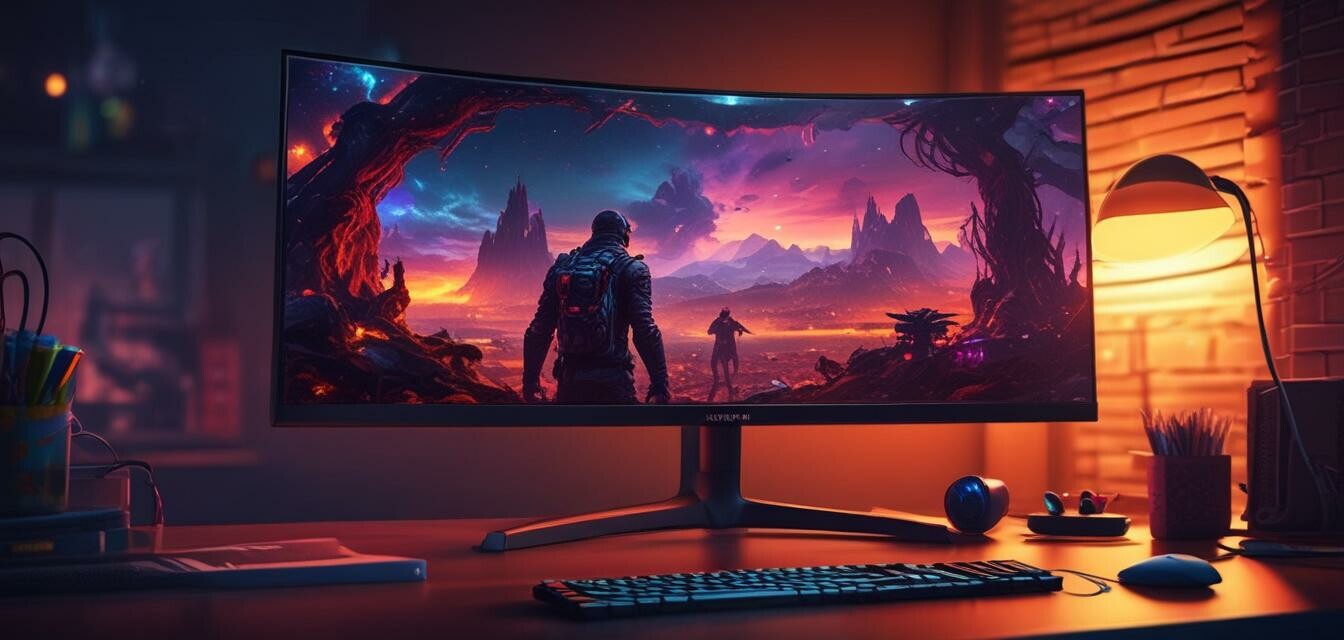
How to Choose the Best Gaming Monitor for Your Setup
Key Takeaways
- Understand resolution options for better visuals.
- Refresh rates and response time are vital for smooth gameplay.
- Panel types affect color accuracy and viewing angles.
- Consider ergonomics and connectivity options.
- Set your budget to narrow down choices effectively.
When it comes to enhancing your gaming experience, selecting the right monitor is crucial. The best gaming monitor isn’t just about resolution; it involves considering various specifications that align with your gaming style. In this comprehensive guide, we’ll explore essential factors you need to consider when choosing your ideal gaming monitor.
Understanding Key Specifications
Different specifications impact your gaming experience significantly. Here are the key aspects to focus on:
| Specification | Description |
|---|---|
| Resolution | Determines the clarity of the display. Common resolutions include 1080p, 1440p, and 4K. |
| Refresh Rate | Indicates how many frames per second the monitor can display. Measured in Hertz (Hz). |
| Response Time | The reaction time of pixels. Lower response time reduces ghosting and blurring in fast-paced games. |
| Panel Type | Includes IPS, TN, and VA panels, which differ in color accuracy, viewing angles, and refresh rates. |
Resolution: Pick the Right Clarity
Resolution impacts the overall quality of visuals in games. Here’s a breakdown of common gaming resolutions:
- 1080p (Full HD): Ideal for most gamers on a budget, ensuring decent visual quality.
- 1440p (QHD): Offers a balance between high-quality visuals and performance.
- 4K (Ultra HD): Provides stunning graphics but requires a powerful GPU to avoid performance drops.
Refresh Rate and Response Time
For competitive gamers, refresh rates and response times play a vital role. Here’s what you should know:
| Refresh Rate (Hz) | Response Time (ms) | Best for |
|---|---|---|
| 60Hz | 5-8ms | Casual gaming |
| 120Hz | 3-5ms | Competitive gaming |
| 240Hz | 1-2ms | Professional gamers featuring fast-paced games |
Choosing the Right Panel Type
Panel types greatly affect color performance and viewing angles. Consider the following:
- IPS (In-Plane Switching): Best color accuracy and viewing angles, but might have slower response times.
- TN (Twisted Nematic): Lower cost with fast response times, but poorer color accuracy.
- VA (Vertical Alignment): Good contrast ratios and decent color reproduction, but can have slow response times.
Ergonomics and Connectivity
Look for monitors that offer adjustable stands to ensure comfortable viewing angles. Additionally, consider the following connectivity options to ensure compatibility with your gaming setup:
- HDMI ports
- DisplayPort
- USB hubs for convenience
Setting Your Budget
Having a clear budget helps to narrow down your options. Gaming monitors range from budget-friendly to high-end models.
Conclusion
Choosing the best gaming monitor is essential for a great gaming experience. By focusing on resolution, refresh rates, panel types, and connectivity, you can find the perfect monitor that fits your needs and budget. For more specific buying advice, check out our Buying Guides.
Pros
- Improved visuals can enhance gameplay.
- Faster refresh rates lead to smoother gameplay.
- Wider viewing angles improve multiplayer experiences.
Cons
- Higher resolution monitors can be expensive.
- Not all games support 4K resolution.
- Technical jargon can be overwhelming for beginners.
